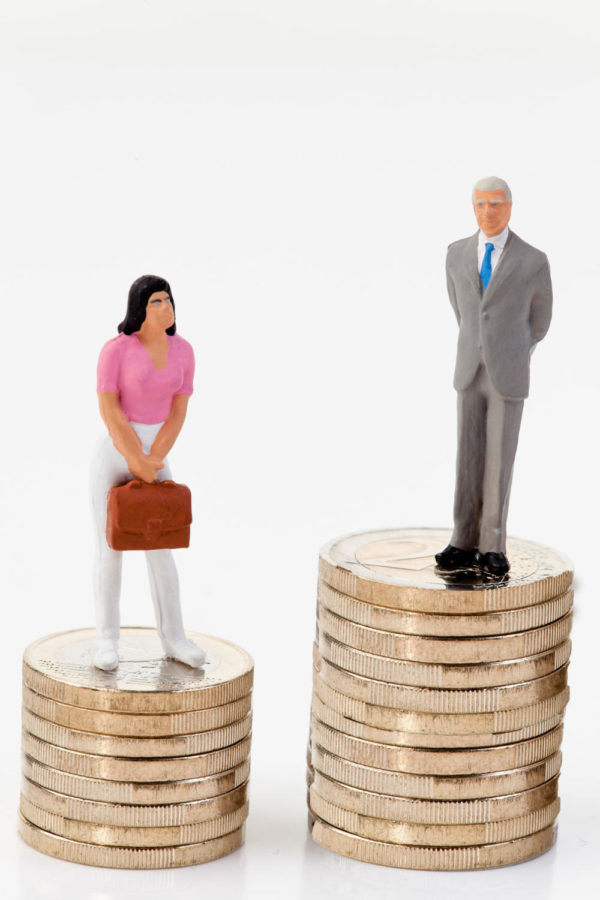Gender pay gap is declining, but still exists
While the pay gap between genders is in decline since the 1970s, there is still a noticeable difference in wages of men and women.
February 25, 2013
The media often portrays the gender pay gap to be widening, but as a whole it is actually declining.
The issue of the gender pay gap relates with factors such as the different characteristics, responsibilities, capabilities and experiences between the two genders.
“There is still about 7 to 10 percent of this gap that cannot be explained by observed labor market characteristics,” said Joydeep Bhattacharya, professor of economics at Iowa State. “The media focuses a lot on that 7 to 10 percent and they call it discrimination but all it is, is a statistical resettable.”
This means that 80 to 90 percent of this wage or earnings gap can be explained by putting controlled variables in the statistical equation, yet there is still an unexplainable gap that exists, Bhattacharya said.
“It is that 7 to 10 percent which is really what people are calling discrimination. One necessarily does not have to call it discrimination,” Bhattacharya said.
The gender pay gap is actually becoming smaller. Men and women’s earnings are not much different from one another.
“It used to be, on average back in the late ’70s, women used to earn about 60 percent of what men earned in a typical week. That number is now close to 85 percent. The gap is declining,” Bhattacharya said.
Observable differences between the two genders have to be taken into account to understand this gap.
“The bottom line, as far as economists are concerned, is that if you take into account observable differences between labor market characteristics of men and women, much of this gap can be explained away,” Bhattacharya said. “The gap is so tiny.”
Even by not accounting for characteristics such as age and education, the gender pay gap is a 15 percent gap for weekly earnings as of 2011, Bhattacharya said.
The people who are affected by this pay gap widening was explained by Bhattacharya.
“It’s affecting people at the lower end of the job distribution. It’s affecting people in the low-paying jobs the most,” Bhattacharya said.
The different working hours between men and women is also a factor that causes the existence of the pay gap between the genders, Bhattacharya said.
Bhattacharya said if a man and a woman are of roughly the same standards, judged by circumstances including age, education and experience, there is hardly any difference in both of the genders’ pays.
The earnings among two people of different genders in a faculty when both are of roughly similar age, experience and publication records do not differ from one another, Bhattacharya said.
“Differences between subjects exist, but take two tenured full professors in economics of roughly similar age, roughly similar publication records, there’s hardly a difference,” Bhattacharya said.
The reason to the overall gap is due to a majority of women being highly focused on administrative support jobs, which are low-paying jobs, Bhattacharya said.
Women tend to shy away from competition and conflict, and high-paying jobs often consist of those two elements, Bhattacharya explained.
“In fact, in many cases at the really high end of things, it’s the other way round — women earn more,” Bhattacharya said.
Bhattacharya said the wage decline for women has been far less than men’s.
“More and more women [are] getting promoted to positions of responsibility, and even in the high deck fields this is happening, overall numbers are still low. There are fewer women in science and engineering fields than men by a long shot, but those who are there are doing better than the men in those professions,” Bhattacharya said.
Bhattacharya said that when people talk about gender gap, they are actually talking about the earnings gap in a typical week.
This national matter also exists within Iowa State.
Helle Bunzel, associate professor of economics said, “I have no evidence that there is a wage gap at Iowa State, but I don’t think that Iowa State is any different than any other workplace.”
The gender pay gap in Iowa State is there, but in a very minimal way, Bunzel said. She also said women may earn about 93 cents to a dollar that men earn.
The impacts of the gender pay gap issue are usually negative, but there is one positive impact, Bhattacharya said.
A positive side would be that women will be able to get jobs easier because it is cheaper to pay them, Bhattacharya said.
“It will only have a negative impact [on] how you feel in the workplace; I don’t see any positive impact coming from that,” Bhattacharya said about the rest of effects.
Total equality in the home is essential and contributes to the gender pay gap issue.
The issue of the gender pay gap can be resolved, but it will not happen until there is total equality in the home, Bunzel said.
“As long as women have more obligations outside of the work force, they’re going to be less available for work. They’re going to keep getting paid less,” Bunzel said.
An employee’s productivity should be all that a firm should care about, Bhattacharya said.
“I would say in some years this gap will completely disappear,” Bhattacharya said.

















